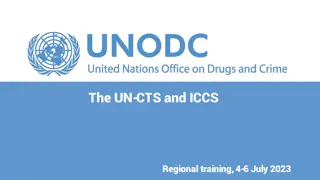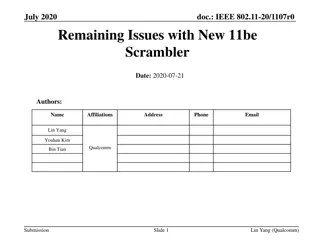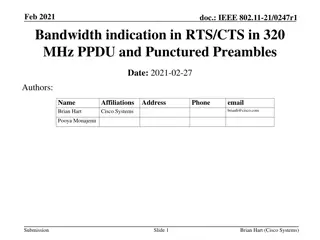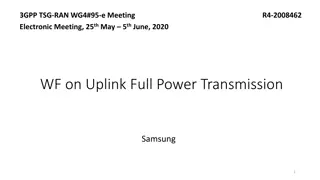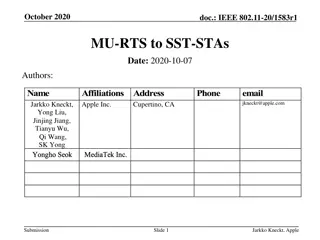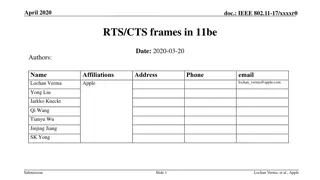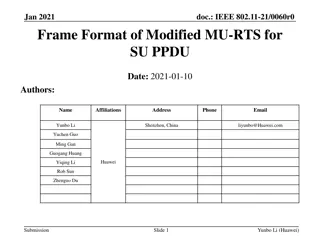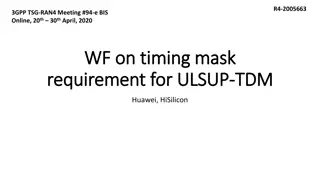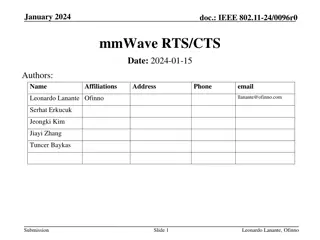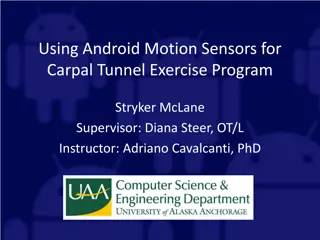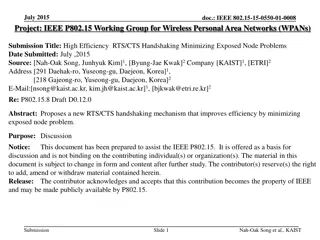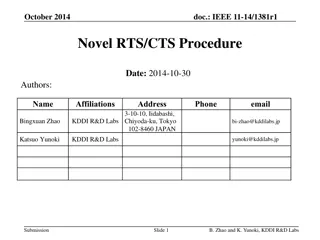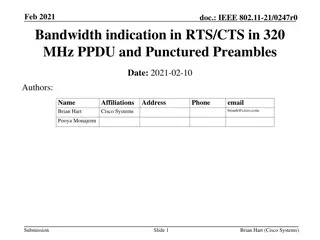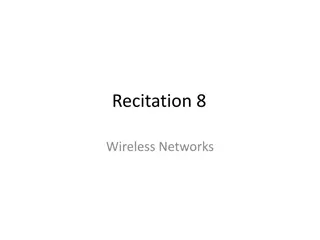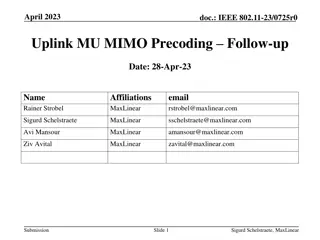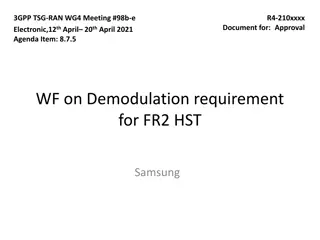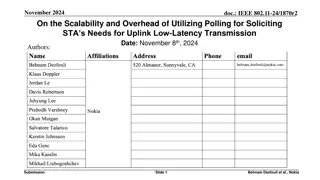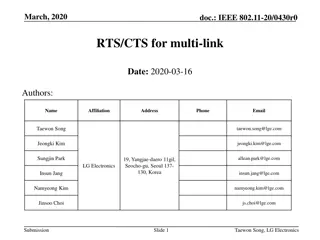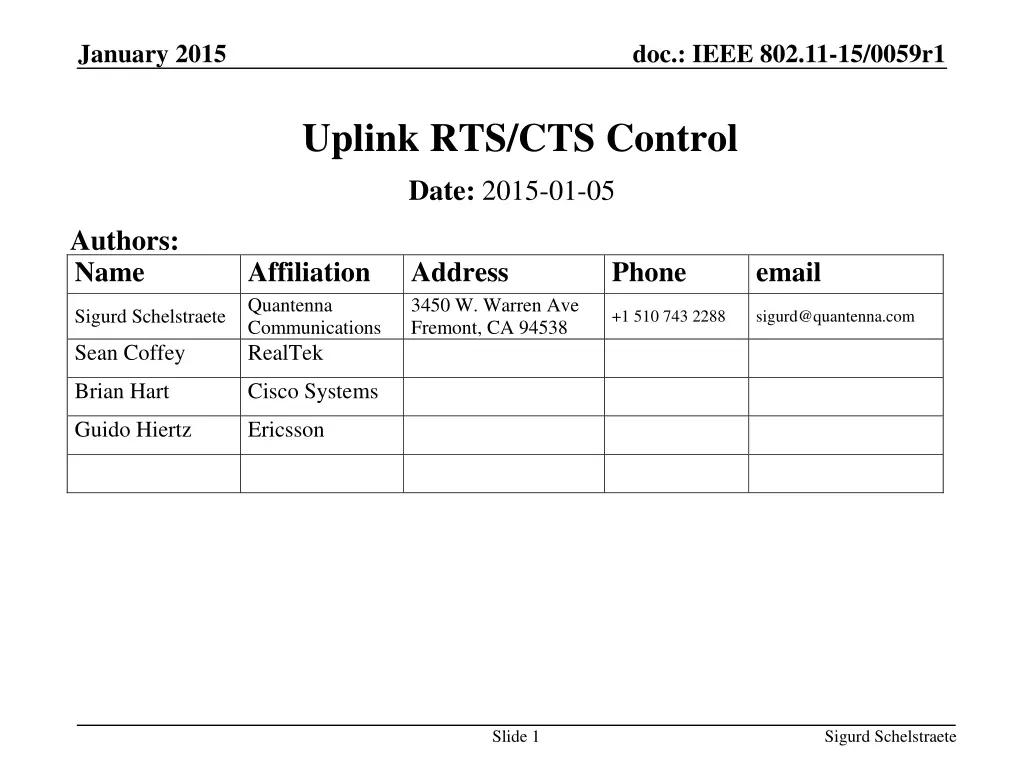
IEEE 802.11 Uplink RTS/CTS Control
Explore the implementation of uplink Request-to-Send (RTS)/Clear-to-Send (CTS) control mechanisms in IEEE 802.11 standard networks. Discuss the optional use of RTS/CTS to mitigate collisions, distribute network allocation vector (NAV), and adapt to channel conditions. Propose enhancing network resource optimization through AP-configured RTS/CTS control for associated STAs. Introduce a potential information element for individual STA configuration or inclusion in beacons.
Download Presentation

Please find below an Image/Link to download the presentation.
The content on the website is provided AS IS for your information and personal use only. It may not be sold, licensed, or shared on other websites without obtaining consent from the author. If you encounter any issues during the download, it is possible that the publisher has removed the file from their server.
You are allowed to download the files provided on this website for personal or commercial use, subject to the condition that they are used lawfully. All files are the property of their respective owners.
The content on the website is provided AS IS for your information and personal use only. It may not be sold, licensed, or shared on other websites without obtaining consent from the author.
E N D
Presentation Transcript
January 2015 doc.: IEEE 802.11-15/0059r1 Uplink RTS/CTS Control Date: 2015-01-05 Authors: Name Affiliation Quantenna Communications RealTek Address 3450 W. Warren Ave Fremont, CA 94538 Phone email +1 510 743 2288 Sigurd Schelstraete sigurd@quantenna.com Sean Coffey Brian Hart Cisco Systems Guido Hiertz Ericsson Slide 1 Sigurd Schelstraete
January 2015 doc.: IEEE 802.11-15/0059r1 Introduction RTS/CTS is an optional mechanism in 802.11 to mitigate collisions from hidden nodes It is also used as a protection mechanism and to distribute the NAV The use of RTS/CTS is controlled by the MIB parameter dot11RTSThreshold Always use RTS/CTS Never use RTS/CTS Use RTS/CTS, conditional on length of PSDU Slide 2 Sigurd Schelstraete
January 2015 doc.: IEEE 802.11-15/0059r1 Autonomous use APs and STAs could also decide to use RTS/CTS as a function of observed channel conditions If interference from hidden nodes is suspected, use RTS/CTS Otherwise, transmission overhead can be reduced by not using it Autonomous use is very useful in OBSS environments Part of effective rate control/medium access Adapt to presence of interference Slide 3 Sigurd Schelstraete
January 2015 doc.: IEEE 802.11-15/0059r1 What s missing? Current use of RTS/CTS is either configured through the MIB or is done autonomously In dense environments, configuration control by the AP can help the overall interference situation AP may have better view of the network situation AP could control the use of RTS/CTS for STAs associated with the AP in a way that optimizes network resources Add a mechanism to the 802.11 standard to enable configuration by the AP of use of RTS/CTS by the STA, on a per-STA basis Slide 4 Sigurd Schelstraete
January 2015 doc.: IEEE 802.11-15/0059r1 Possible implementation Define new information element Uplink RTS/CTS Control element In its simplest form, such an element could look like: Element ID Length RTSThreshold Octets: 1 1 2 With RTSThreshold having a similar interpretation to the MIB variable dot11RTSThreshold . This IE can be used for individual configuration of a STA or included in e.g. Beacon Slide 5 Sigurd Schelstraete
January 2015 doc.: IEEE 802.11-15/0059r1 Possible implementation (2) The previous slide shows only the simplest possible IE, reusing the format used in current MIB control Other formats are possible, e.g.: Use TXTIME rather than PSDU size Element ID Length TXTIME Octets: 1 1 TBD Add extra information, e.g.: different TXTIME for 1st transmission and subsequent retransmissions Element ID Length TXTIME 1st transmission TXTIME retransmissions Octets: 1 1 TBD . Slide 6 Sigurd Schelstraete
January 2015 doc.: IEEE 802.11-15/0059r1 Individual configuration of STA 802.11 defines Action frame formats for wireless network management (WNM) See 8.5.14 in 802.11-2012 or 8.6.14 in P802.11REVmc_D3.3 WNM Action frame serves a variety of Wireless Network Management purposes WNM Action field values 29-255 currently unused WNM Action Category Uplink RTS/CTS Control Element Details: Category = WNM WNM Action = newly defined WNM Action field value Uplink RTS/CTS Control Element = newly defined information element Slide 7 Sigurd Schelstraete
January 2015 doc.: IEEE 802.11-15/0059r1 In Summary We propose to provide a mechanism to allow the AP to control the RTS/CTS policy for associated STAs A possible implementation involves: Definition of dedicated information element Examples given, but details to be determined New Action frame type of Category WNM IE could also be included in Beacon Slide 8 Sigurd Schelstraete
January 2015 doc.: IEEE 802.11-15/0059r1 Straw Poll Do you support adding a mechanism that allows the AP to individually configure the use of RTS/CTS by its associated STAs? Slide 9 Sigurd Schelstraete


